rasília, which succeeded Rio de Janeiro as Brazil's capital in 1960, was built in less than three years. Its location in the center of Brazil
was chosen to help open up the western part of the country. The
extraordinarily ambitious plan, mainly the work of Lúcio Costa and Oscar
Niemeyer, caused a sensation with its avant-garde architecture and its
innovative city planning ideals. Because Brasília was planned and
constructed as a whole piece, it doesn't have the mix of commercial,
residential, and government functions that happens when a city grows
over time; instead these uses are strictly divided. This makes it easy
to find the architectural highlights- its prime tourist attractions -
most of which are in one large area, but these are widely separated from
the commercial and residential neighborhoods where you can join in
local life. The central area is in the form of a large cross with a
curving north-south axis, Eixo Rodoviário, and a straight east-west
axis, Eixo Monumental. Esplanada dos Ministérios is the central axis
with the principal official buildings. Be prepared for plenty of
walking, or join a tour to cover the distances between sights.
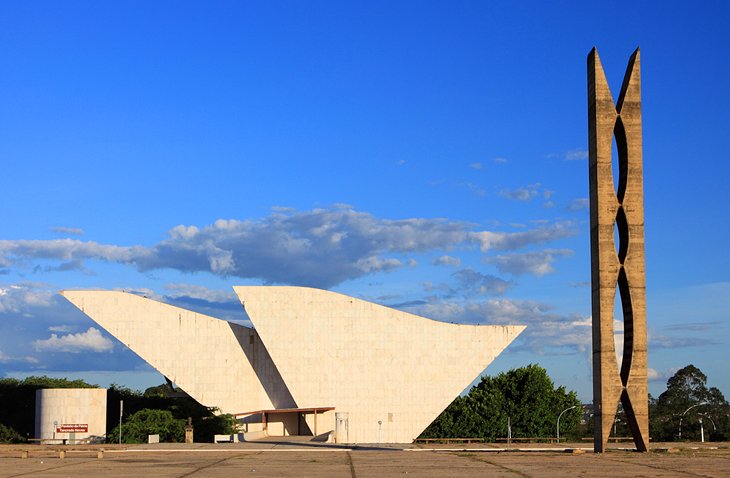
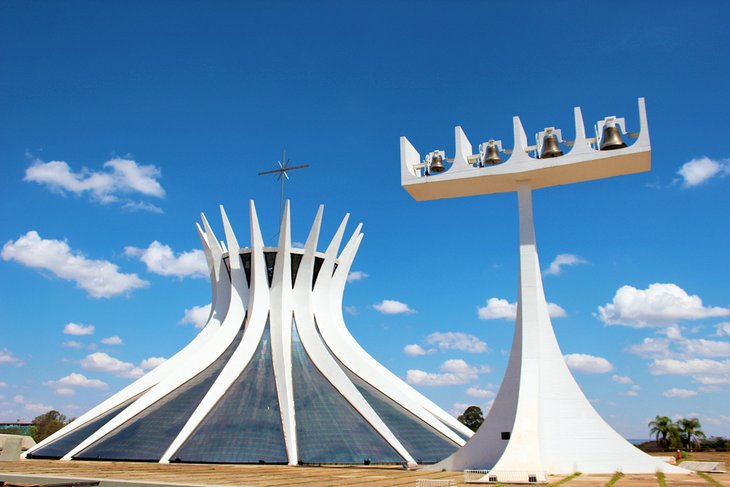
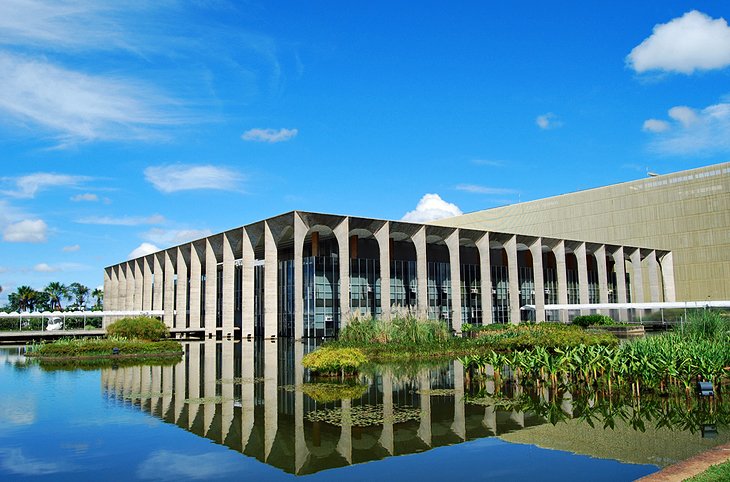
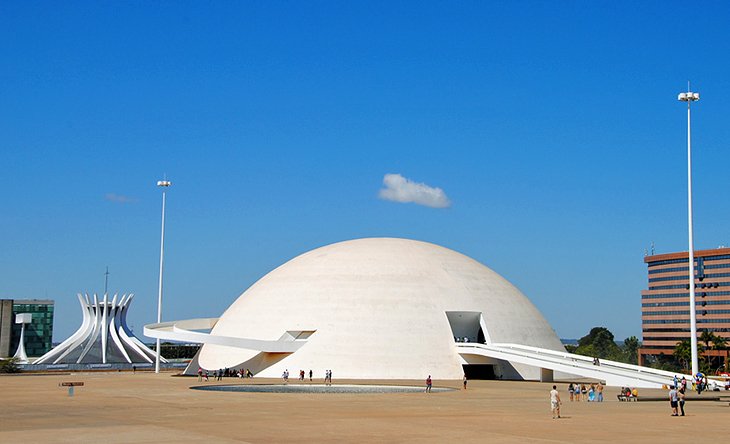
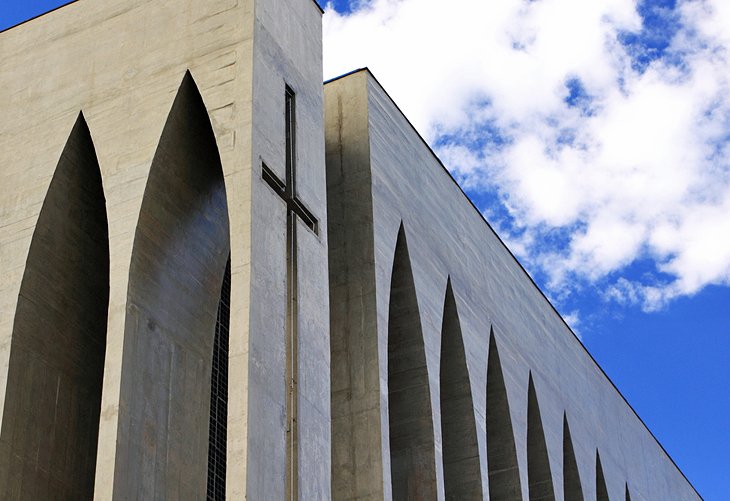
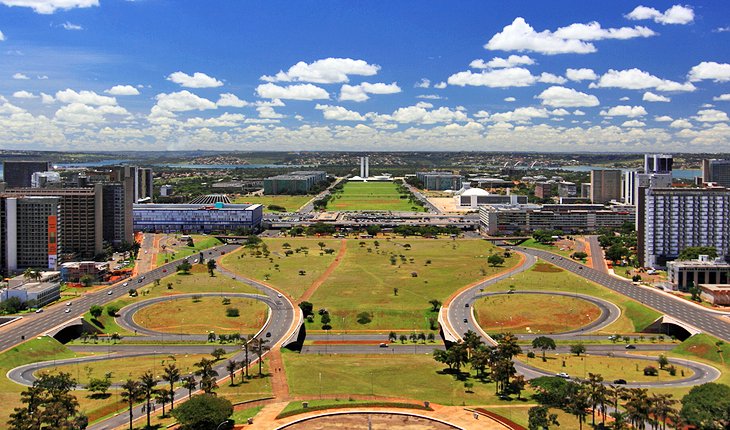
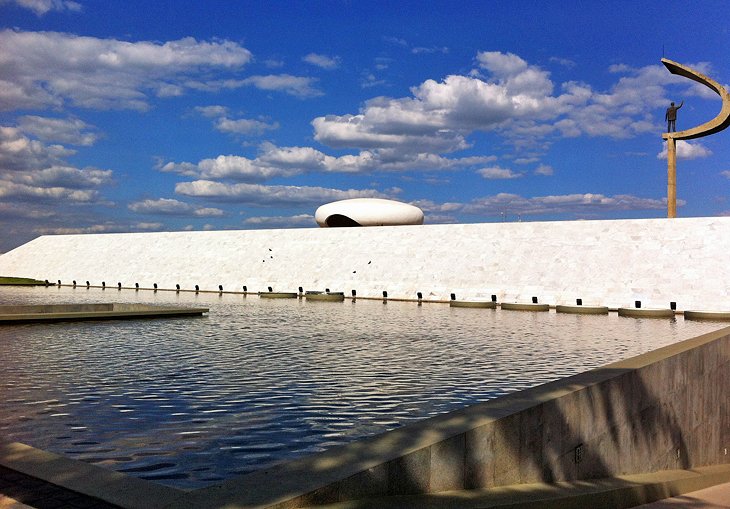
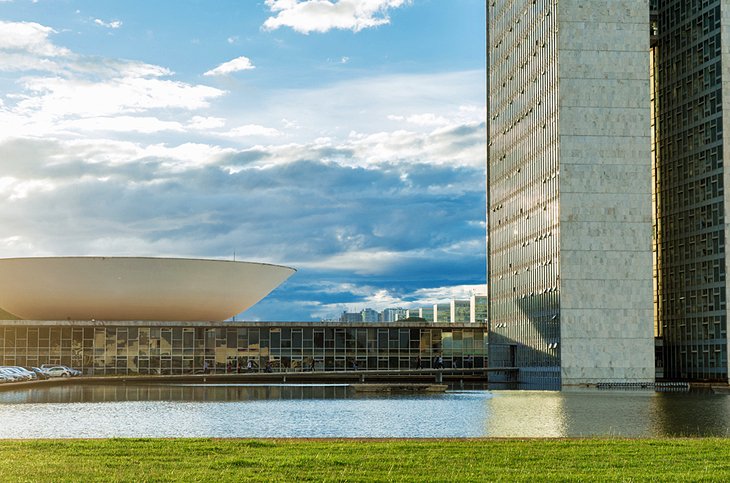
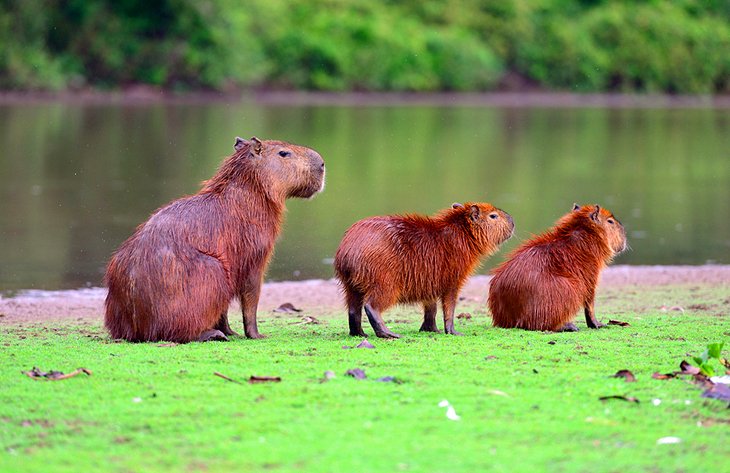

See also: Where to Stay in Brasília

1 Praça dos Tràs Poderes
Praça dos Tràs Poderes
Brasilia's governmental center boasts some of its most striking
landmark buildings and monuments. As the name of the Praça dos Tràs
Poderes (Square of the Three Powers) suggests, it is surrounded by
buildings housing the executive, legislature, and judiciary: the Palácio
do Planalto, the official residence of the President; the Supremo
Tribunal Federal (Supreme Court); and the Congresso Nacional. Also
around the square are the Historical Museum of Brasília and the Panteão
da Liberdade (Pantheon of Freedom), designed by Oscar Niemeyer to honor
the rebels of the Inconfidància Mineira of 1789 and President Tancredo
Neves, who died in 1985 soon after taking office. On the south side is
the Palácio dos Arcos. The Mastro da Bandeira is a 91-meter flagpole
from which flies a 73 meter Brazilian flag.
2 Catedral Metropolitana Nossa Senhora Aparecida

Catedral Metropolitana Nossa Senhora Aparecida
The city's most famous landmark is the unique circular cathedral,
designed by Niemeyer and completed in 1970. Its 16 curved concrete
columns soar upward to create a crown that surrounds a glass roof. The
natural lighting effect inside is spectacular. The four large statues
outside the entrance represent the Four Evangelists.
Address: Esplanada dos Ministérios, Brasilia, Planalto Central
3 Palácio dos Arcos

Palácio dos Arcos
A C Moraes / photo modified
The Palácio dos Arcos, also known as the Palácio Itamaraty, houses
the Foreign Ministry and is one of Oscar Niemeyer's greatest
achievements. A long line of symmetrical arches stand above a reflecting
pool, the whole ensemble set in beautiful gardens designed by the noted
Brazilian landscape architect Roberto Burle Marx. The lavishly
decorated interior surrounds a semi-roofed courtyard with a garden. The
building is open to the public.
Address: Esplanada dos Ministérios, Brasilia, Planalto Central
4 Memorial dos Povos Indígenas (Museum of Indigenous People)

Memorial dos Povos Indígenas (Museum of Indigenous People)
Leandro Neumann Ciuffo / photo modified
This outstanding collection of native Brazilian art and artifacts not
only records pre-colonial native culture but celebrates the living
traditions of Brazil's indigenous peoples today. Historical and
present-day implements - pottery, baskets, weapons, paddles, and feather
headdresses - join art works created especially for the museum in a
collection considered one of the best in South America.
In designing the unusual round building patterned after a traditional
Yąnomamö round house, Oscar Niemeyer consulted with Yąnomamö shamans and
elders for authenticity. The museum shop is an excellent place to find
handmade native crafts.
Address: Esplanada dos Ministérios, Brasília, Planalto Central
5 Santuario Dom Bosco (Sanctuary of Dom Bosco)

Santuario Dom Bosco (Sanctuary of Dom Bosco)
The church of São João Bosco is dedicated to the 19th-century Italian
priest canonized in 1934, whose vision of the foundation of a Utopian
capital city in the New World near the 15th parallel is considered the
inspiration for Brasilia. This sanctuary was built right on the 15th
parallel. Architect Vasconcelos Naves designed a square building of 40
tall pointed arches that frame tall windows of stained glass in multiple
shades of blue, designed by Claudio Naves and made by Hubert van
Doorne. The windows make up most of the walls, and an enormous
chandelier is made of more than 7,000 pieces of Murano glass. The large
cedar Crucifix over the altar was carved by Gotfredo Tralli from a
single tree.
6 Torre de TV (Television Tower)

Torre de TV (Television Tower)
The 224-meter-tall Brasilia TV Tower is a good place to get an
overview of the city and a sense of its layout. An observation deck at
74 meters is open to the public free every day, and on Sundays, a craft
market takes place at its base.
Address: Eixo Monumental, Brasilia, Planalto Central
7 Monumento JK: President Kubitschek Memorial

Monumento JK: President Kubitschek Memorial
Mariana Heinz / photo modified
The dramatic monument on Praça do Cruzeiro is the memorial to
President Juscelino Kubitschek, the larger-than-life president of Brazil
who is considered the founder of Brasilia. The monument was designed by
Oscar Niemeyer, and many consider it among his finest works. Along with
Kubitschek's tomb and a museum devoted to him, the monument contains
interesting exhibits on the city he envisioned and saw through to
reality, including early plans, construction photography, and other
materials that illustrate Brasilia's history. Around the monument are
artworks by contemporary sculptors.
Address: Praça do Cruzeiro, Brasilia, Planalto Central
8 Congresso Nacional (National Congress)

Congresso Nacional (National Congress)
Yet another landmark of modern architecture is the pair of buildings
housing the Chamber of Deputies of Brazil (the lower house) and the
Senate, along with their offices. For this, Oscar Niemeyer chose two
sharply contrasting designs. For the two houses he created dish shapes
that have been referred to as flying saucers, separating them by a pair
of sharply linear rectangular towers. Around these photogenic buildings
is a broad lawn with a reflecting pool, and inside are exhibits that
include a Tunnel of Time. You can tour the complex with an
English-speaking guide.
Address: Via Eixo Monumental, Brasilia, Planalto Central
9 Parque Nacional de Brasília

Parque Nacional de Brasília
Brasília National Park covers 28,000 hectares in the northwest part
of the city, protecting a number of different environments, including
the low and crooked trees of the cerrado, the bush steppe of the
Brazilian interior, expanses of scrub and grassland, swampy
palm-scattered plains, and the imposing trees of the gallery forests
found on riverbanks and lakeshores. The streams in this area, dammed to
form Lake Santa Maria, supply the whole of Brasília with drinking water,
and among the park's greatest attractions are its mineral springs.
Along with its varied flora typical of the wild areas of midwestern
Brazil, the park protects a rich and varied fauna, with innumerable
species of birds, rheas, wild pigs, giant armadillos, capybaras, pampas
deer, rare maned wolves, jaguars, caimans, anacondas, and other species
of snakes. You can follow either of two main walking trails through the
lush forests: the short Capivara, about a 20-minute walk, or the
hour-long Cristal trail. You can also join the locals soaking in one of
the two mineral pools.
10 Lago do Paranoá

On the east side of the city, the Rio Paranoá has been dammed to form
a large lake, the Lago do Paranoá. Along its shore are embassies and
consulates, sports clubs, restaurants, the University, the Olympic
Center, and the Palácio da Alvorada, official residence of the President
of the Republic. The Ponte Juscelino Kubitschek, better known as Ponte
JK, is a concrete and steel bridge across the lake, supported by three
crisscrossing arches that tower more than 60 meters above the water.
Designed by architect Alexandre Chan and structural engineer Mário Vila
Verde, the bridge has received several architectural awards since its
completion in 2002. It is especially striking at night, when floodlights
accent its soaring curves.
Where to Stay in Brasília for Sightseeing
We recommend these centrally-located hotels in Brasília near the city's famous landmarks, monuments, and museums:
- Windsor Plaza Brasilia Hotel: luxury high-rise hotel, inviting pool and hot tub, free buffet breakfast, sauna and gym.
- Windsor Brasilia Hotel: mid-range pricing, near shopping mall, modern decor, indoor pool, spa with sauna.
- Grand Mercure Brasilia Eixo: affordable rates, near shops and restaurants, friendly staff, contemporary style.
- Brasilia Apart Hotéis: budget high-rise hotel, outdoor pool, on-site restaurant, free parking.
No comments:
Post a Comment